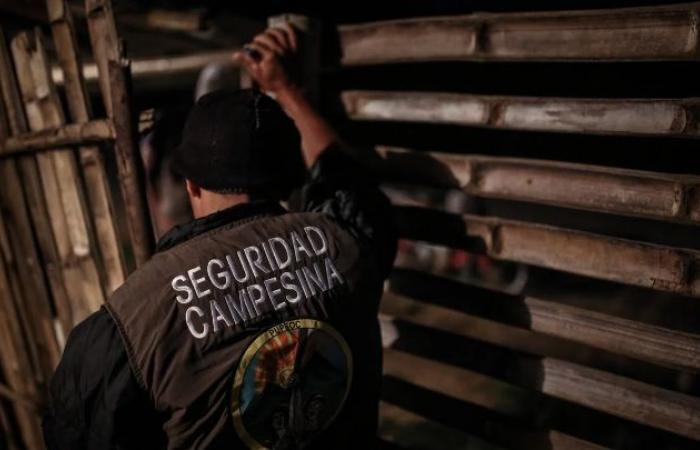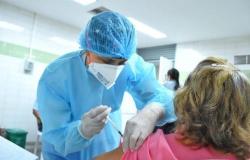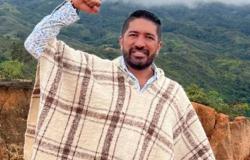Although some have wanted to minimize and even ignore the social and armed conflict that is currently hitting the territory and population of the historic department of Cauca (Including the South, the Center and the Naya canyon, in the Valle del Cauca; and North of Nariño: Policarpa, Leiva and Rosario), the situation is complicated every day with unfortunate events such as the one that affected the father of Vice President Francia Márquez in El Roble, the massacres in the municipalities of Florida and Miranda, the murders of social leaders in El Plateado and the use of cylinder bombs in Caldono, against the police station in this town.
As has been pointed out by different analysts of the Colombian conflict, we find ourselves in a strange and perverse “Third cycle of the contemporary national war”, which other more optimistic ones (See https://indepaz.org.co/el-momento-de -peace-the-difficult-passage-from-conversations-to-negotiations-camilo-gonzalez-posso/ ) minimize with the argument that with the Peace Agreement with the FARC in the second half of 2016 , a “definitive moment of inflection” occurred, a “there is no turning back”, and what there are are residual groups attached to drug trafficking, in a simplism that is impressive given the official responsibilities that are displayed.
The spokespersons for this approach base their hypotheses on ideas such as the following: guerrillas are out of fashion. The military apparatus of the State is more capable than it was before. Every day we see very harsh blows to the guerrillas on the news. The current guerrilla groups are manifestations of clear organized crime; nothing to do with a guerrilla war itself.
The harsh truth at this point in history is that Colombia, as Gutiérrez Sanín maintains (See file:///C:/Users/LENOVO/Downloads/Dialnet-FranciscoGutierrezSanin2020UnNuevoCicloDeLaGuerraE-8272098.pdf), has relapsed into a political war, because the “same changes that have closed the door to some forms of resistance and violent opposition have opened them to others. If non-state armed groups (guerillas, militias, networks, hybrid groups) are taken as a whole, it is found that many of these may currently be in better conditions to operate than in times past. Gutiérrez adds that even these armed groups have not found a way to grow more rapidly and build an acceptable political image, but war has its hard rules – he who falls asleep and does not learn, leaves the game – it is clearly possible that thanks to these A few winners (EMC Cauca, 2 Marquetalia) have already found ways to adapt to the new times, in a Darwinian way.
The war in Cauca with its main armed actors such as the columns Dagoberto Ramos, Jaime Martínez, Carlos Patiño, Isaías Pardo, Adán Izquierdo, Rafael Aguilera, Franco Benavides, Urias Rondon and Jonier España, causes greater trauma in regional and local society, demanding a new political approach to such a phenomenon, understanding it as an expression of a new level of social and armed conflict, since the current guerrillas have adapted to the new conditions of war and the military operation of the Armed Forces; conditions that, of course, have created difficult obstacles that, in fact, have been overcome by the new guerrillas such as the FARC ep, the 2 Marquetalia, the ELN and the latent armed groups of the EPL, with a more ideological and political discourse focusing on the resistance, since they do not intend to take power by armed means, nor do they engage in large operations; It is enough for them to act in the territory, trying to rebuild a popular rearguard (not necessarily geographical) and capturing illegal income. Their way of operating, their procedure would no longer necessarily be to bite and run away – without ruling out resorting to the flea method when necessary – but rather to build some support, promote specific agendas and maintain their strength.
Thus, what we are witnessing today in Cauca, Nariño, Valle del Cauca, Meta, Arauca, Magdalena Medio and Catatumbo, is a multiplication of rural, urban, resistance guerrillas and hybrid groups between politics and crime. These actors do not necessarily intend to advance and win in the sense of taking central political power, but they do want to do politics. War and politics, as has always been the case, are closely linked, through methods such as establishing various forms of territorial control, regulating the political system at local and regional levels through threats and offering security, and raising just territorial causes such as agrarian reform, human rights and the fight against corruption that involves recognized political clans (such as that of the current governor of Valle del Cauca, Dilian Toro, who loots the State budgets using various institutional parapets such as the Mixed Sports Fund of the Valle del Cauca and the Cali Technology Corporation).
It is of no use in the face of this ongoing war in Cauca to label the guerrilla actors who group thousands of ex-combatants as drug traffickers and criminals – along with the dozens of prominent intermediate political cadres – who have returned to the mountains and have created or joined with rebel nuclei lacking ideological discourses (Border Command, for example).
It is a mistake to address this phenomenon in these terms unless it is pure propaganda. An error along the entire line. To some extent, these guerrilla (and quasi-guerrilla) actors are the voice of the future: in a more specific way, of a possible future. It is not difficult to imagine, as Gutiérrez Sanín suggests, activation routes through which they could become a political threat as is occurring by affecting and disturbing the management of the first left-wing government in Colombia, such as the one headed by President Gustavo Petro, committed to a transformative progressive popular agenda.
But to understand how this warlike and political trend is taking shape, it is necessary to deepen our knowledge of the current regional war, to address the changes in the nature of war as a consequence of the transformations of the State, of the cities (Cali and Jamundí, for example) and the technological revolution that places new tools for combat at the disposal of guerrilla actors such as smart cell phones (more dangerous than a Kalasnikov rifle), social networks, remote control, kamikaze drones, autonomous vehicles and Elon Musk’s Starlinks satellite dishes.
About the changes in the nature of the Colombian war, the emergence of the third cycle of violence and the significant involvement of the Colombian rural world, which is already the main scenario of the new war cycle; and it is in close interweaving with the abundant system of intermediate cities (Popayán, Santander de Quilichao, Jamundí, Cali and Tuluá) that characterizes the country today: in certain cities this rural “rearguard” (hinterland) (mountains of the Micay canyon and del Naya) is very connected with crops, drug routes and a multitude of unresolved social conflicts such as those of the Pacific, those of indigenous people, Afros, peasants who demand agrarian reform, those of corruption and unemployed people, without adequate health and housing, we will address it in a future analysis.
In closing, let’s say that the truth is that politics will always be at the center of these new modalities of war that we are witnessing in the Colombian regions. We are facing armed conflicts and new forms of irregular warfare characterized by flexibility, technological innovations (massively used in the war in Ukraine and in the Palestinian conflict in Gaza) and the powerful influence of politics and communications.
We outgrew the Dwarf and we didn’t make the right exits. We cannot objectively capture what drives us up.
By Horacio Duke
Piendamó, June 17, 2024
@HoracioDuque8






